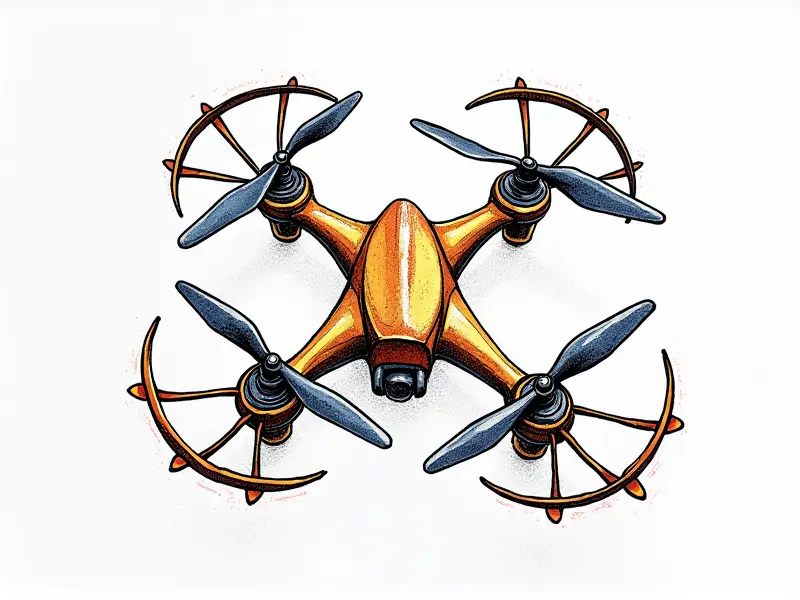iFlight drone tips

iFlight Drone Tips: Mastering Flight Modes and More
Whether you're a beginner or an experienced pilot, mastering your iFlight drone is essential for achieving optimal performance. From understanding flight modes to maintaining your drone's battery life, this comprehensive guide covers everything you need to know.
Mastering iFlight Drone Flight Modes
iFlight drones offer several flight modes designed to cater to different flying styles and conditions. Understanding these modes is crucial for enhancing your piloting skills:
- Stable Mode: Ideal for beginners, this mode provides a stable flight experience with automatic altitude hold.
- Athlete Mode: Offers more aggressive control and faster response times, suitable for advanced pilots.
- Mirror Mode: Reverses the drone's controls to match your preferred flying style.
Essential iFlight Drone Maintenance Tips
Regular maintenance is key to keeping your iFlight drone in top condition. Here are some essential tips:
- Clean Your Propellers: Regularly clean propellers to ensure optimal performance and prevent damage.
- Lubricate Moving Parts: Apply lubricant to moving parts like the gimbal and motors for smooth operation.
- Check Battery Connections: Ensure all battery connections are secure to avoid power interruptions during flight.
Boost Your iFlight Drone Battery Life
Battery life is a critical factor in drone performance. Here’s how you can extend it:
- Use High-Quality Batteries: Invest in reputable battery brands to ensure longer lifespan and better performance.
- Avoid Overcharging: Charge your batteries only when necessary, as overcharging can degrade their capacity.
- Monitor Temperature: Keep an eye on the ambient temperature during charging; extreme temperatures can affect battery life.
Advanced iFlight Drone Camera Techniques
To capture stunning aerial footage with your iFlight drone, consider these advanced camera techniques:
- Use Manual Settings: Adjust ISO, shutter speed, and aperture manually for better control over exposure.
- Experiment with Angles: Utilize the gimbal to achieve unique perspectives and dynamic shots.
- Leverage Post-Processing Tools: Enhance your footage using software like Adobe Lightroom or Luminar for professional results.
Avoiding Common iFlight Drone Mistakes
Mistakes are inevitable, but learning from them is key to improving. Here’s how to avoid common pitfalls:
- Overlooking Safety Checks: Always perform a thorough pre-flight safety check before taking off.
- Flying Beyond Line of Sight: Stay within visual range to maintain control and avoid losing your drone.
- Neglecting Software Updates: Keep your drone’s firmware up-to-date for the latest features and bug fixes.
Upgrading Parts for Your iFlight Drone
Enhance your iFlight drone's performance by upgrading key components:
- Battery Capacity: Increase flight time with higher-capacity batteries.
- Motor and Propeller Set: Upgrade to high-performance motors for better speed and stability.
- Gimbal System: Opt for a more advanced gimbal for smoother video footage.
Troubleshooting iFlight Drone Connectivity Issues
Frustrated by connectivity problems? Here’s how to troubleshoot them:
- Check Signal Strength: Ensure you have a strong connection between your controller and drone.
- Update Firmware: Outdated firmware can cause connectivity issues; update it regularly.
- Inspect Antennas: Make sure all antennas are properly connected and undamaged.
Maximizing Performance with iFlight Settings
Tweak your drone’s settings to unlock its full potential:
- PID Tuning: Adjust PID values for improved stability and responsiveness.
- Gyro Sensitivity: Fine-tune gyro sensitivity based on flying conditions and personal preference.
- Wind Compensation: Enable wind compensation settings to maintain control in windy conditions.
iFlight Drone FPV Setup 101
Setting up First-Person View (FPV) for your iFlight drone can transform your flying experience. Follow these steps:
- Select a Compatible Video Transmitter: Choose a transmitter that supports the desired range and resolution.
- Install FPV Camera: Mount an FPV camera to capture real-time video feed from the drone’s perspective.
- Connect Receiver: Connect your receiver to your goggles or monitor for seamless viewing.
Advanced iFlight Drone FPV Techniques
Become a pro at FPV flying with these advanced techniques:
- Practice Low-Level Flying: Master the art of low-level flying to navigate tight spaces and obstacles.
- Learn to Fly in Windy Conditions: Develop skills for maintaining control during windy weather.
- Utilize FPV Training Goggles: Enhance your spatial awareness using training goggles designed specifically for FPV flying.
iFlight Drone Racing: Winning Strategies
Compete in drone racing with these winning strategies:
- Optimize Your Setup: Fine-tune your drone’s settings and equipment for maximum speed and agility.
- Practice Regularly: Consistent practice is key to mastering race tracks and improving reaction times.
- Analyze Race Data: Use data from previous races to identify areas for improvement and refine your technique.
Conclusion
Mastery of your iFlight drone involves a combination of technical knowledge, regular maintenance, and continuous practice. By following the tips outlined in this guide, you can enhance your flying experience, capture breathtaking footage, and even compete at a professional level. Whether you’re a beginner or an experienced pilot, there’s always room for improvement and exploration with your iFlight drone.

